NYC’s Forgotten ‘War on Christmas Trees’
Discover how an obscure holiday crackdown affects festive street vendors today!


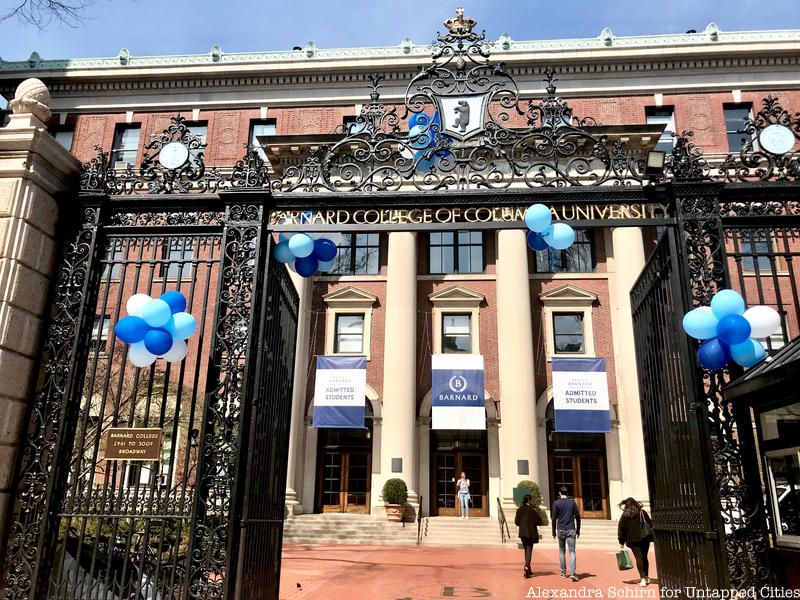
Bold in its mission to educate women, Barnard College is also full of secrets: a provocative bench, a 700+ foot sub, a new library and greenhouse, and a dancing mascot. Founded in 1889 with the intent to educate women with the same rigor men readily had available to them, Barnard College is one of the oldest women’s colleges in the world.
Located in Morningside Heights, Barnard offers a challenging liberal arts education, dedicated to shaping bold female leaders to change and inspire the world, which is seen in Barnard’s history, traditions, and new buildings. This ambitious and bold campus, however, is full of brewing, unspoken, and provocative secrets that need to be divulged!
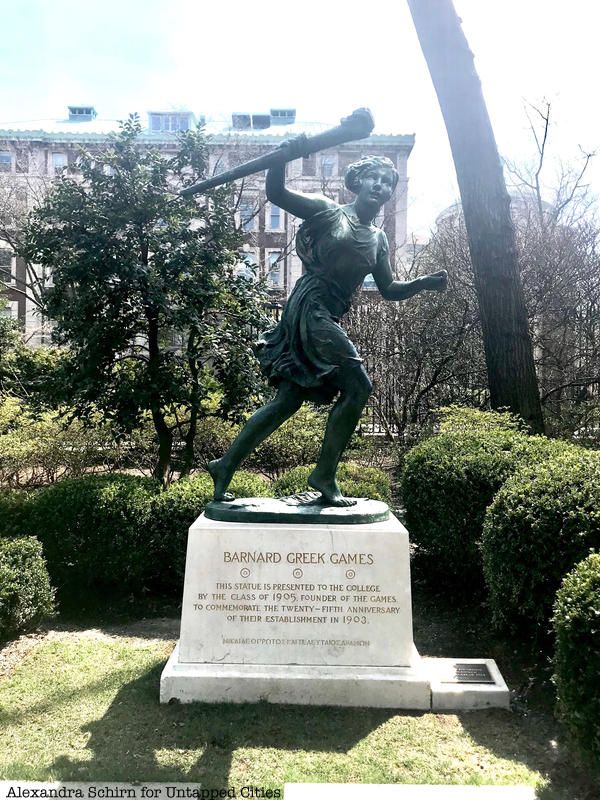
In 1889, Annie Nathan Meyer, a student and writer, founded Barnard College which was named after Columbia University’s 10th president, mathematician, and educator: Frederick Barnard. Although unsuccessful, he argued for the admission of women into Columbia University. Self taught, Meyer was accepted to be a student at Columbia College Collegiate Course for Women, a program founded in 1885 but did not recognize women as officially enrolled students. Nor could women attend the classes at Columbia – they were given a syllabus and if they passed an exam, they could receive a degree.
Meyer and Barnard were both dissatisfied by Columbia’s stance to not admit women, but they were committed to the education of women. Thus, in 1887 Meyer petitioned the University Trustees for an affiliated self-sustaining liberal arts women’s college. In 1889 Barnard was one of the few colleges in the United States where women received the same rigorous education that men received.
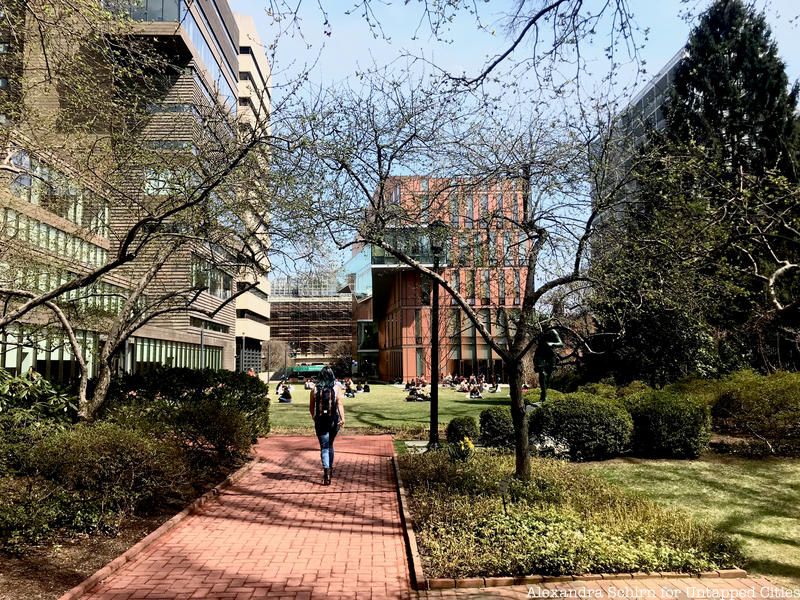
The first Barnard class was held in a rented townhouse at 343 Madison Avenue, which is located just a few blocks from Grand Central. There were 14 students at this time in the School of Arts and 6 faculty members. From Barnard’s start in 1889, Barnard took women’s education seriously and challenged its students. Barnard’s goal and mission to educate female leaders in higher education holds true from its foundation.
In 1892, Columbia announced it would be moving to Morningside Heights, on the site of the former Bloomingdale Asylum, a public hospital petitioned for by the doctors at King’s College (formerly Columbia University pre-Revolutionary War). Barnard followed in tandem, building a campus just next door. Several of those original buildings are now on the National Register of Historic Places (though not New York City landmarks).
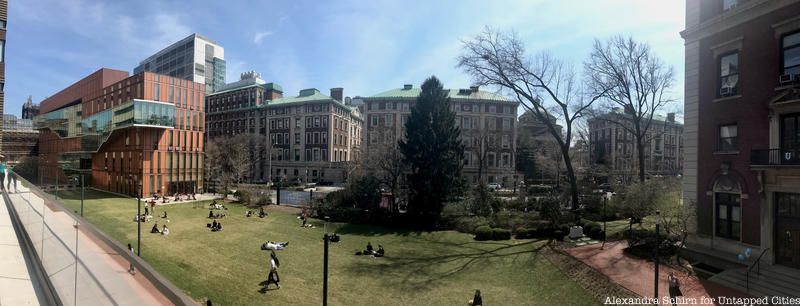
Barnard’s campus is only four acres. In fact, it takes under two minutes to walk across the entirety of Barnard’s campus. Starting at 116th Street and Broadway is the Quad, which consists of dorm housing, and ending at 120th Street is Milbank Hall. Therefore, Barnard’s campus is very accessible and easy to navigate, so come visit!
*Note: Arguably, however, Barnard’s campus also includes Columbia’s campus (which is 36 acres), since students at both schools are constantly engaging with both campuses from classrooms, libraries, the fitness center, and dining halls. So, including Columbia’s campus, would enlarge Barnard’s campus size by 10 times.

Big Sub is a 700+ foot long sandwich that is assembled across Barnard’s campus. This tradition takes place once a year and is essentially Barnard’s annual free sandwich giveaway. The long sandwich is made up of many little sandwiches that accounts for nearly every dietary restriction. This giant 700+ long sandwich assembled by the students and faculty that takes hours long to put together is usually consumed by students between 5 to 10 minutes.
BigSub opens at 7 pm, but it is recommended to get there by 6:30 to be guaranteed a sandwich. So for all the work that goes into preparing for Big Sub, the dissembling of the sandwich that extends across Barnard’s campus is pretty easy!

On the Barnard lawn there is a marble bench—the Jenny Holzer sculpture—that is engraved with provocative statements, such as “Stupid people shouldn’t breed,” “An elite is inevitable,” “Push yourself to the limit as often as possible, ”and “It’s crucial to have an active fantasy life.” Jenny Holzer is an award-winning American conceptual artist who focuses on the use of words and ideas in public spaces. She created the bench in 1987 and entitled it: SELECTION FROM TRUISMS (Abuse of power comes…).
This bench is part of Holzer’s “Truisms…” series which consists of statements and aphorisms (“truisms”) in various materials, such as silk-screened paintings of declassified government memoranda detailing prisoner abuse. Thus, the bench serves as Barnard’s first major piece of artwork and is a world-class, provocative sculpture that is aligned with Barnard’s mission to educate women to think and speak out.

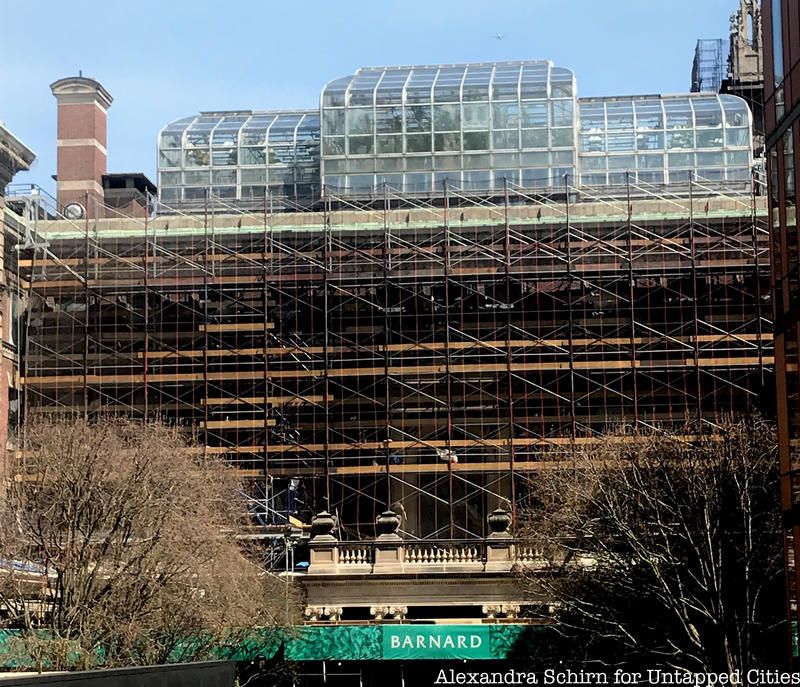
Barnard has a Greenhouse on campus! The Arthur Ross Greenhouse is on the roof of Milbank Hall for Barnard’s Department of Biological Sciences. This new faculty built greenhouse replaced the 1928 greenhouse built for Edmund W. Sinnot (a Barnard professor from 1928-1940) because the old greenhouse started to have issues with heating, plumbing, and ventilation systems and this greatly limited the utility of the greenhouse.
The new Arthur Ross greenhouse has a custom-designed aluminum and glass shell, fully computerized heating, cooling, ventilation, lighting and watering systems to provide independent, automatic climate control. The central room functions as a general public space and conservatory and houses the teaching collection. Each room within the greenhouse can be entered independently because there is a central corridor; additionally, there is a small passenger elevator to provide access for the disable and to transport plants and supplies.
The greenhouse has plants that are extremely diverse that are from almost every continent and biome. There are more than 450 species of plants of cultural, medicinal, or culinary importance within the greenhouse. One of the plants Barnard is most proud of us the corpse-flower (Amorphophallus titanium ortitan arum). which has grown from an invisible storage organ to a gigantic ten-foot tall leaf in only 6 weeks. Barnard anticipates that in one of the upcoming years, the corpse-flower will reach a 12 or 15 foot bloom which would be the world’s largest floral display (that would be accompanied with a bad odor).
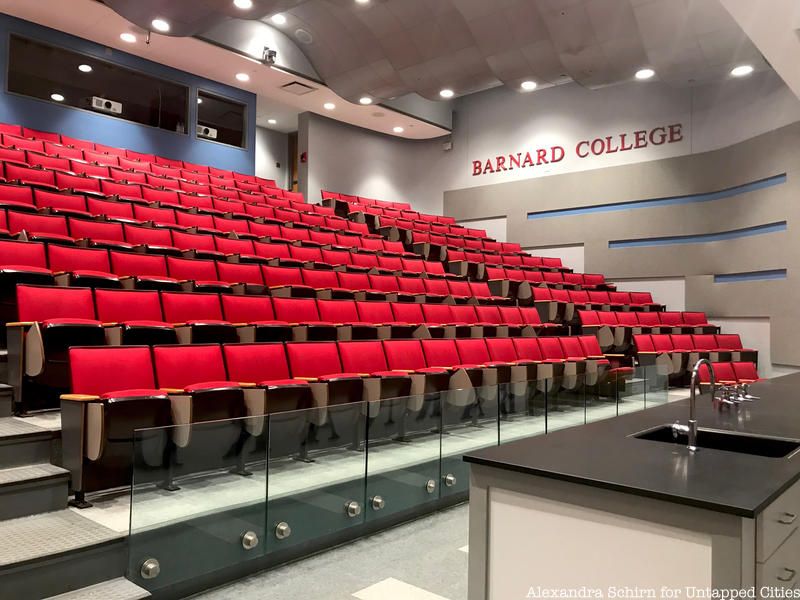
There are only four large lecture classrooms at Barnard: Milbank 405 (Krueger Lecture Hall), LL02 Milstein (Lynn Chu Tiered Classroom), Barnard 304 (Held Lecture Hall), and Altschul 102 (Lehman Auditorium). These classrooms range in room capacity from about 100-250 students.
LLO2 Milstein is the newest of these classrooms, located in the new Milstein Center and seats 100 students. Milbank 405 seats 102 students, Altschul 102 has a room capacity of 227, and the biggest lecture hall is Barnard 304 which seats 247 students. That being said, Barnard offers many smaller classes, such as seminars and recitations that seat about 15 students. The college prizes being able to offer a liberal arts education within New York City.

Barnard has a mascot. Millie the Dancing Bear, now 15 years old, is named after Barnard’s first President Millicent McIntosh. She is notable for her boldness, playfulness, furriness and talented dance moves. Millie serves to promote school spirit on campus and loves wearing Barnard attire, especially during Barnard social events like Big Sub, WinterFest, or Founder’s Day. She enjoys interacting with students, whether it is taking pictures with students, dancing with students, or being a helping hand.
Millie is very well-known around campus—she even has a manager. Multiple students are able to be Millie, and this is a huge honor. Millie’s reveal takes place at the end of the year, which is coming up!
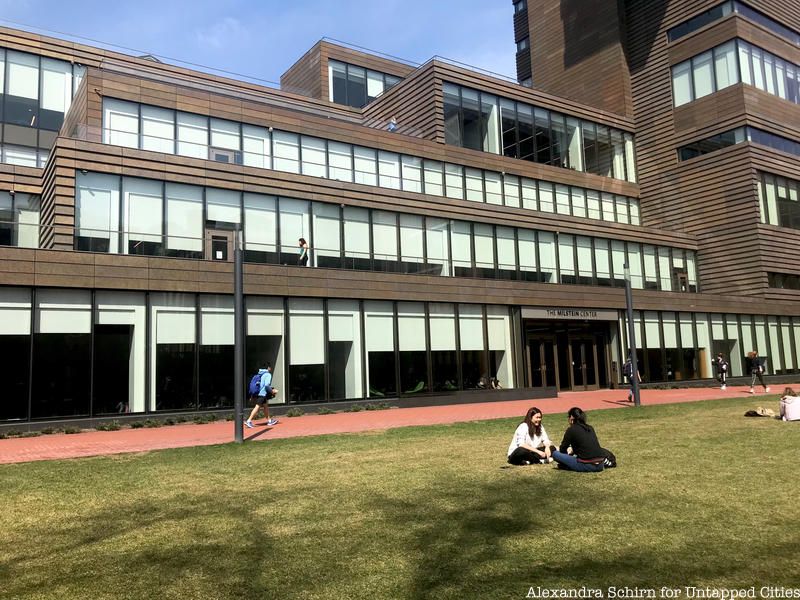
The 137 million dollar new Cherly and Philip Milstein Center for Teaching and Learning—designed by the firm Skidmore, Owings & Merrill—functions as the central academic and social hub of student and faculty life at Barnard. After three years of construction, the Milstein Center opened at the start of the 2018-2019 school year.
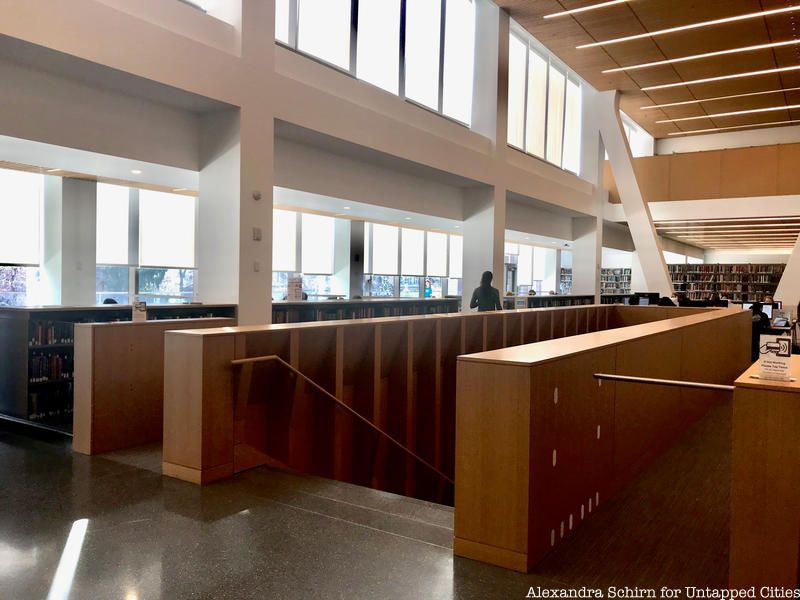
This massive and modern 128,000-square-foot and five floor building has beautiful open windows that bring in natural light, alongside a tower of eleven floors serving dual purposes.The Milstein Center contains a library, outdoor balconies and seating, Pete’s Coffee (that has delicious avocado toast), and classrooms. Furthermore, there are more than 370 student spaces that include active and quiet study areas for individuals and groups. The Milstein Center contains nearly twice as many classrooms as the former Lehman Library, which was torn down in 2016.
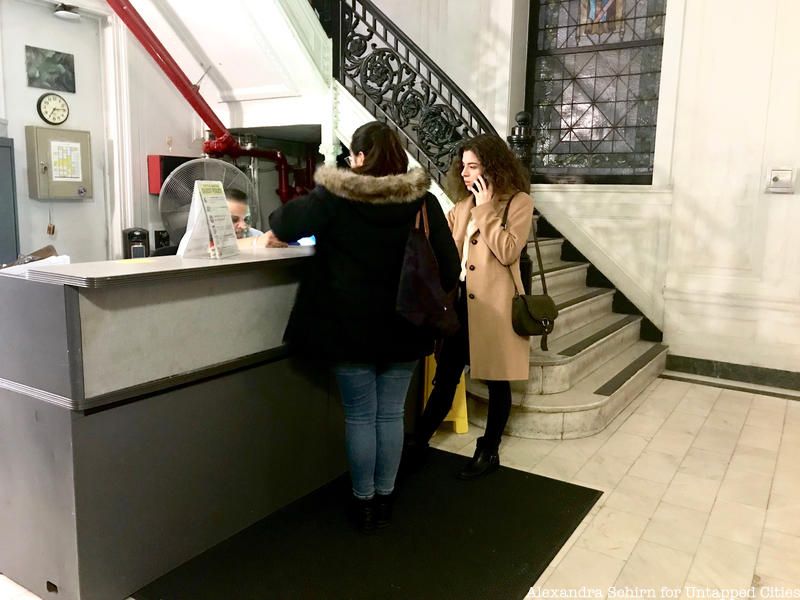
Every student at Barnard despises the complicated guest sign-in policy. A guest is considered someone who is a non-resident of the residence hall. For a Barnard student to access another Barnard residence hall, it is easy: the student just presents a valid Barnard ID to the Access Attendant and is able to walk on in. The trouble starts when a Barnard student wants to sign in a non-Barnard guest.
For a Barnard student to successfully sign in a non-Barnard guest into a Barnard residence hall, the Barnard student must meet the guest at the front desk with a valid Barnard ID and the guest must have some form of identification on them. The Barnard student must tell the Access Attendant their room number, show their Barnard ID, and the Access Attendant will take the guest’s ID for the duration of the guest(s) visit. Barnard students are permitted to only have 3 guests at a given time for no more than three consecutive nights.
The Barnard student or resident host must “escort their guest(s) at all times” and additionally the Barnard student must escort their guest to the front desk in order for the guest to get their ID back —so doesn’t this mean that the Barnard student is essentially babysitting their guest?—Well, yes. Barnard students’ aggravation with the signing in policy for guests stems from this unnecessarily strict escorting rule for guests at all times.
Next, check out the Top 10 Secrets of Columbia University.
Subscribe to our newsletter